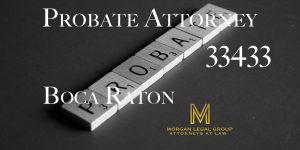Demystifying the 7-Year Rule in Inheritance Tax for Effective Estate Planning
The 7-year rule in inheritance tax represents a critical consideration for anyone engaged in estate planning. As part of our commitment to providing comprehensive estate planning services, Morgan Legal Group in Miami offers this in-depth exploration to help you understand and navigate the implications of this rule. With strategic planning, it’s possible to significantly reduce the inheritance tax liability on your estate significantly, ensuring that your loved ones benefit fully from your legacy.
Introduction to the 7-Year Rule
Inheritance tax can often claim a significant portion of your estate, reducing the amount passed on to your beneficiaries. However, the 7-year rule presents an opportunity to mitigate these effects through careful planning and timing of gifts. Essentially, this rule exempts gifts made more than seven years before the donor’s death from inheritance tax, offering a pathway to preserving more of your estate for your heirs.
The Mechanics of the 7-Year Rule
Understanding the mechanics of the 7-year rule is pivotal for anyone looking to optimize their estate planning. Gifts made more than seven years before the donor’s death are not considered part of the estate for inheritance tax purposes. However, gifts made within this seven-year window may still be subject to tax, albeit on a sliding scale known as taper relief.
Different Types of Gifts and Their Implications
Not all gifts are treated equally under the law. From potentially exempt transfers (PETs) to chargeable lifetime transfers (CLTs), the nature of the gift can significantly impact its tax treatment. PETs become completely exempt if the donor survives for seven years after making the gift, while CLTs are immediately taxable if they exceed the annual exemption limit.
Strategies for Maximizing the Benefits of the 7-Year Rule
Strategic gifting can play a crucial role in estate planning. By spreading out significant gifts over time, it’s possible to minimize the potential tax liability. This section will delve into various strategies for making the most of the 7-year rule, considering factors like the donor’s age, health, and the financial needs of the beneficiaries.
Taper Relief: Reducing Inheritance Tax on Gifts
Taper relief offers a reduction in the amount of inheritance tax payable on gifts made between three and seven years before the donor’s death. This relief is applied on a sliding scale, decreasing the tax rate as more time passes from the date of the gift to the date of the donor’s death.
Case Studies: The 7-Year Rule in Action
Illustrative case studies can provide valuable insights into how the 7-year rule can be applied in practice. This section will present hypothetical scenarios demonstrating the effective use of the rule in various estate planning contexts, highlighting the potential tax savings and benefits for beneficiaries.
Common Pitfalls and How to Avoid Them
While the 7-year rule offers significant tax planning opportunities, common pitfalls can undermine its effectiveness. These might include poorly timed gifts, failing to consider the impact of CLTs, or neglecting the potential for unforeseen circumstances affecting the donor’s ability to survive the seven-year period.
The Role of Professional Guidance in Navigating the 7-Year Rule
Professional advice is invaluable in navigating the complexities of the 7-year rule and its application to your specific circumstances. Morgan Legal Group specializes in estate planning and inheritance tax strategies, providing expert guidance to ensure your estate planning efforts are both efficient and effective. Our team can help you develop a tailored plan that maximizes the benefits of the 7-year rule, taking into account your unique goals and the needs of your beneficiaries.
Contact Morgan Legal Group in Miami today to learn how we can assist you with your estate planning needs, help you secure your legacy, and protect your loved ones from unnecessary tax burdens.








